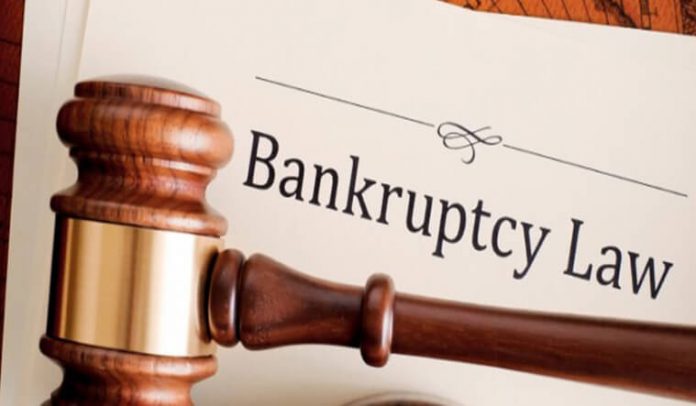This article is written by Ms Aporva Shekhar from KIIT School of law. This article is a basic introduction to the United States Bankruptcy Laws.
Table of Contents
Introduction
As is the case with most bankruptcy regulations, the United States Bankruptcy law is not that distinct and its main purpose is to regulate the relations of a bankrupt entity with their creditors. But the main point of distinction between the American bankruptcy regime and others around the world is that it is relatively more liberal in its approach and debtor-friendly. Under this law, bankruptcy is not seen as an end per se but rather a way for the debtor to retain enough to start over, albeit a healthy end. The federal legislation governing this area, enacted on October 1st 1978, is known as the Bankruptcy Reform Act of 1978 (hereinafter referred to as the 1978 Act). But it is most commonly referred to as the ‘Bankruptcy Code’ which is enshrined in the United States Code as ‘Title 11’. It is the primary legislation but it is also accompanied by various other legislations and state laws.
Before the genesis of the present legislation, the Bankruptcy Act of 1898 (hereinafter referred to as the 1898 Act) was the primary legislation in this field, containing a comprehensive set of provisions that governed and regulated bankruptcy in America. The 1898 legislation was a complex one and had several pitfalls which several amendments failed to rectify, and the amendment of 1978 failed to simplify the Act. However, the abovementioned amendment was still equally important as it brought about clarity on several topics that the 1898 Act failed to address adequately. The most recent amendment to the 1978 law was made in 2005, titled the Bankruptcy Abuse Prevention and Consumer Protection Act.
US Bankruptcy Code – an overview
Bankruptcy is a judicial process that is initiated by filing a petition in the appropriate court. Although insolvency and bankruptcy might go hand in hand, it is not a prerequisite for seeking relief. The above-mentioned petition can be filed voluntarily by the debtor or the creditors can file an involuntary petition under the US Bankruptcy Code. A federal Government agency, known as the United States Department of Justice, becomes a party to the case ensuring compliances along with other parties consisting of the secured and unsecured creditors, the shareholders, the debtor and a trustee if appointed. The Code is divided into chapters with numerals as opposed to the scheme of the earlier 1898 Act that had been segregated by roman numerals.
The first few chapters of the Code are of general application and do not deal with any specific proceeding. Chapter 1 deals with definitions, powers and jurisdiction of the courts and other subsidiary information relevant to the code. Chapter 3 deals with the administrative and procedural aspects of the code and the filing of voluntary and involuntary petitions. Chapter 5 mostly deals with the claims of the creditors and associated provisions dealing with the expenses attached, and so on. The Bankruptcy Code contains key provisions for several bankruptcy proceedings, namely liquidation under chapter 7, municipalities under chapter 9, reorganization of business under chapter 11, chapter 13 contains provisions for individuals with income, and foreign companies with assets are covered under chapter 15. These provisions will be discussed below.
A look into the key provisions and features of the Code
Chapter 7
Liquidation is the most popularly known form of proceeding that is covered under chapter 7 of Title 11 (Bankruptcy Code). This proceeding involves the collection of assets of the debtor that are not exempt by a court-appointed trustee. The main objective of the court-appointed trustee is to allocate the creditors, proceeds made from the sale of assets in order of preference. Under this chapter, a business entity, corporation, partnership or individual can seek relief.
Individuals or entities who file for liquidation under the seventh chapter are entitled to retain or exempt certain assets, but this varies from state to state as the associated rules and state laws change.
In the case of a voluntary petition, a juristic person or individual can apply voluntarily or in case of an involuntary petition, the creditors with claims can move to pressure the debtor to declare bankruptcy. After the filing of the petition, the economic activities of the debtor shall cease unless the court-appointed trustee undertakes the task of continuing them. The trustee’s main job is to raise funds and in the case of a large organization, the trustee may decide to sell off parts of the business to raise proceeds to be used to satisfy the creditors’ claims. The liquidated company’s assets are collateral for credit advanced by secured creditors, therefore the secured creditors’ claims are satisfied before the others.
The courts are empowered by the statute to discharge certain debts in the proceeding but others are exempted like taxes, including those of property and arrears, student loans, fines that are imposed by courts and child support. The recent amendment of 2005 (Bankruptcy Abuse Prevention and Consumer Protection Act, 2005) aims to protect creditors by limiting the filing of bankruptcies by consumer debtors.
Chapter 9
Apart from regulating the bankruptcies of commercial institutions, there are provisions for restructuring the debts of municipalities as well. Chapter 9 specifically provides for restructuring the debts of the municipalities. A municipality for this Code has been defined to mean and include a state’s public agency or a political subdivision. A government officer, state law or any organization permitted by the state has the authority to permit a municipality to become a debtor making that authorized municipality eligible for consideration under this chapter. Out of fifty states, only twelve states permit bankruptcy and after fulfilling certain stringent prerequisites only twelve others allow the application of this chapter.
But before this chapter came into being, the only recourse for relief was to make the municipalities increase taxes through the writ of mandamus. A 1934 Amendment which was declared unconstitutional in 1935 by the court aimed to include municipalities within the ambit of this code, and even after striking this amendment, a similar one has been introduced again in 1937.
Due to the financial crisis of 2008, several municipalities went bankrupt. Between the period of 2010 to 2013, around thirty-one municipalities went bankrupt, with Detroit and Michigan being the largest municipalities to go bankrupt on 18th July 2013.
Chapter 11
Unlike liquidation, where all activity ceases to operate after filing the petition, unless the trustee undertakes the task to continue it, under this chapter the proceeding of restructuring is taken care of while the business or individual continues to operate. Chapter 11 of the Code provides for reorganization and even though it is the most popular option for commercial entities, individuals can also seek relief under this chapter. This chapter contains more liberal regulations, as the debtor may retain possession and might even borrow more credit with due approval from the courts. As the title of the chapter suggests, a plan of reorganization is made that needs to satisfy certain requirements and creditors that have a claim may vote on the plan and if acceptable, the court may finally confirm it. The main objective of this chapter is to streamline proceedings and reduce costs as much as possible.
Chapter 13
This chapter is an alternative to chapter 7 and is also known as the ‘Wage earner’s Plan’, as it enables the individual to reorganize their debts under the protection and supervision of the courts. Chapter 13 enables the debtors to propose a time-bound plan of three to five years to discharge their debts to creditors in the form of instalments. The debtor’s income is considered while formulating the period of the plan. If the income is less than the state’s median, a three-year plan or longer period with a cause is approved by the courts. And in cases where the income of the debtor is greater than the median, a five-year plan may be proposed, but this is the maximum time limit and in no situation can it be increased to more than five years.
Proceedings under this chapter are preferred over liquidation, as chapter 13 allows individuals to halt debt recovery proceedings like foreclosure and discharge the liability over some time. The opportunity to reschedule the obligation to discharge secured debts is beneficial as it reduces the overall payment. This chapter also has a special provision to protect co-signers or third parties who might become liable in cases of consumer debts. This chapter facilitates the consolidation of discharge of liabilities for the debtors who are under protection and are aided by a trustee to satisfy the claims of creditors without any direct contact with the debtor.
Any individual who has unsecured and secured debts of lower than $394,725 and $1,184,200 respectively, self-employed or otherwise may apply under this chapter as long as the entity is not a corporation or partnership. But an individual can become disqualified from filing a petition altogether if they have a failed prior bankruptcy proceeding where they have been dismissed or defaulted from following the courts’ orders willfully.
Chapter 15
This chapter, which was added by the 2005 Amendment, deals with cross-border insolvency, facilitating the proceeding between American courts and foreign courts to find a resolution. The abovementioned chapter is the replacement of Section 304 of the Bankruptcy Code and is the domestic adoption of a model law created by the 1997 United Nations Commissions on International Trade Law (UNCITRAL). UNCITRAL has been domestically adopted by several countries, so interpretation of this chapter has to be done in coordination with the interpretation given by other countries to ensure a uniform and cohesive regime for insolvency cases. The main objective of this chapter is to provide effective relief to parties of interest, debtors, creditors and assets of different countries. This objective is achieved through the application of the five salient features enshrined in the statute:
- The first being to ensure cooperation between America and other involved parties and authorities in a cross-border case.
- The second being that to establish a certain legal framework for investment and trade,
- The third is to provide for the protection of interests and fair and efficient proceeding for all involved in a cross-border case.
- Fourth is to maximize and protect the debtor’s assets and
- The fifth is to preserve and protect investment and employment by rescuing financially distressed corporations.
Proceedings under this provision are mostly ancillary to proceedings initiated in a different country which is normally the debtor’s native country.
The loopholes present in the US bankruptcy laws and ways to resolve the same
- The 2005 Amendment revamped several aspects of the Bankruptcy Code but it still failed to address several issues that might be used by certain debtors to escape their credit liability. Certain classes of exempted assets are allowed to be retained by the debtors and this might create an avenue for certain wealthy people and corporate entities to escape liability. Asset protection trusts are used by individuals to escape the creditors’ claims as they are exempted assets, and the current federal law protects trusts that are to be used for retirement or education.
- Another identifiable issue is the proceeding under Chapter 13 of the Code that in cases where the wage earner’s wage is above the state’s median, the repayment from their wage is stretched over a longer period. This extended burden for individuals who might earn slightly more than the median creates an additional liability, keeping the debtors bankrupt longer which might ultimately force their already strained finances to buckle under this extended burden leading them to default.
- It is also important to note that the existing law forces middle-class people and wealthy people to go through the same documentation process which is not equitable, very costly, and inefficient.
- The only way to escape these problems is to streamline the process altogether, eliminating the inequitable requirements and unnecessary paperwork might be the solution to some of the existing issues with the code. The current system places onerous burdens on the attorneys which ultimately passes over to the consumer debtor who then needs to go through the more expensive chapter 13 proceedings just to afford their attorney. By reducing the pecuniary requirements for filing bankruptcy, this problem created by the 2005 Amendment might be eliminated to a certain extent.
- The student loan crisis in America is another vice created by the current regime which makes it extremely hard to discharge it during bankruptcy proceedings. Student loans are protected by the current law and can only be discharged by showing ‘undue hardship’ and this requirement is interpreted very strictly hence making the discharge almost impossible, unlike other consumer debts. The first step to resolve this issue would be to end the prohibition that has been levied on the discharge of student loans during bankruptcy proceedings.
A comparison between US bankruptcy laws and Indian bankruptcy laws
- The applicable legislation under U.S. law is the Federal Bankruptcy Code of 1978 and other state laws. The applicable legislation under Indian Law is the Insolvency and Bankruptcy Code of 2016, uniformly applicable throughout India.
- Under U.S. law, the proceedings can be initiated by the debtor voluntarily or involuntarily through the urging of creditors. Under Indian law, corporate debtors, financial and operational creditors can initiate the corporate insolvency resolution process.
- The moratorium and resolution period under U.S. law are 120 days that can be extended to a period of eighteen months on valid grounds. The period for resolution is 180 days which can be increased by ninety days at a time.
- After the proceeding ends, the debtor is in possession in the U.S. but in India, an interim resolution professional handles management until replaced by a Resolution Professional.
- In the U.S, debtors can deal with existing or new contracts to extract their value. But in India, the resolution professional cannot make any changes to any new or existing contracts without the approval of the committee of creditors.
- In the U.S., debtors have a period of four months that can be extended to eighteen months with valid reasons to come up with a resolution plan that needs to be approved by the creditors in two months. In India, no such specification has been made as to the period to come up with a resolution plan.
- Under the U.S. Code, the debtors can sell all assets free of lien to prevent further erosion of value. But in India, the resolution professional may only do so after seeking approval from the committee of creditors.
- In the U.S, the expenses for the proceeding are borne by the debtor who might receive aid against assets that are not collaterals for creditors. In India, the expenses are to be raised by the interim resolution professional against encumbered property without the approval of the committee of creditors but a resolution professional may only do so after seeking approval from the committee of creditors.
Conclusion
As we can infer from the comparison, both the regimes prefer to resolve the situation while maintaining the entity involved as a going concern as opposed to liquidation. The American law focuses on consolidating and streamlining the process of bankruptcy to ensure that very little loss of value is endured by the debtor at the end of it. And for the major part, the statute is fulfilling its intended purpose as the proceedings have helped many discharge their liabilities and bankruptcies have lowered over the decades. Although there is still an avenue for possible development to make the proceeding even more responsible and beneficial for all the parties involved.
References
- https://www.abi.org/abi-journal/new-and-emerging-chapter-11-issues-in-bankruptcy-administration
- http://www.manrom.in/Content/Manage/Pdf/Insolvency/Comparison-IBC-US-UK.pdf
LawSikho has created a telegram group for exchanging legal knowledge, referrals, and various opportunities. You can click on this link and join:
 Serato DJ Crack 2025Serato DJ PRO Crack
Serato DJ Crack 2025Serato DJ PRO Crack











 Allow notifications
Allow notifications



